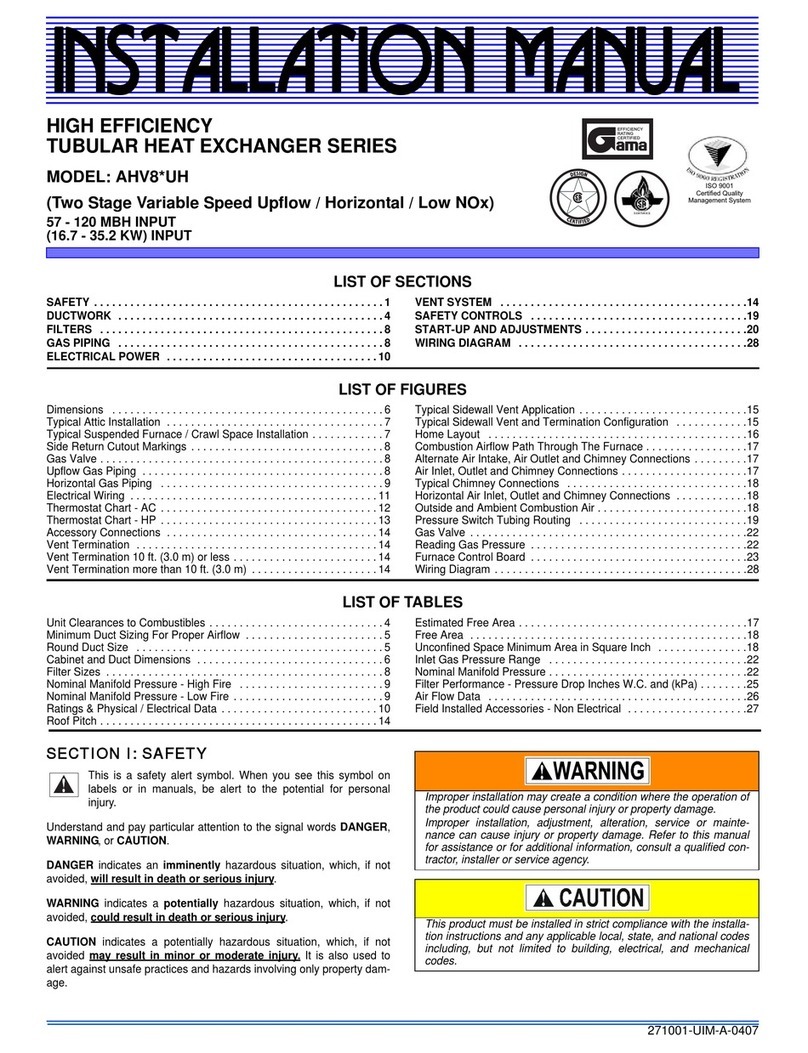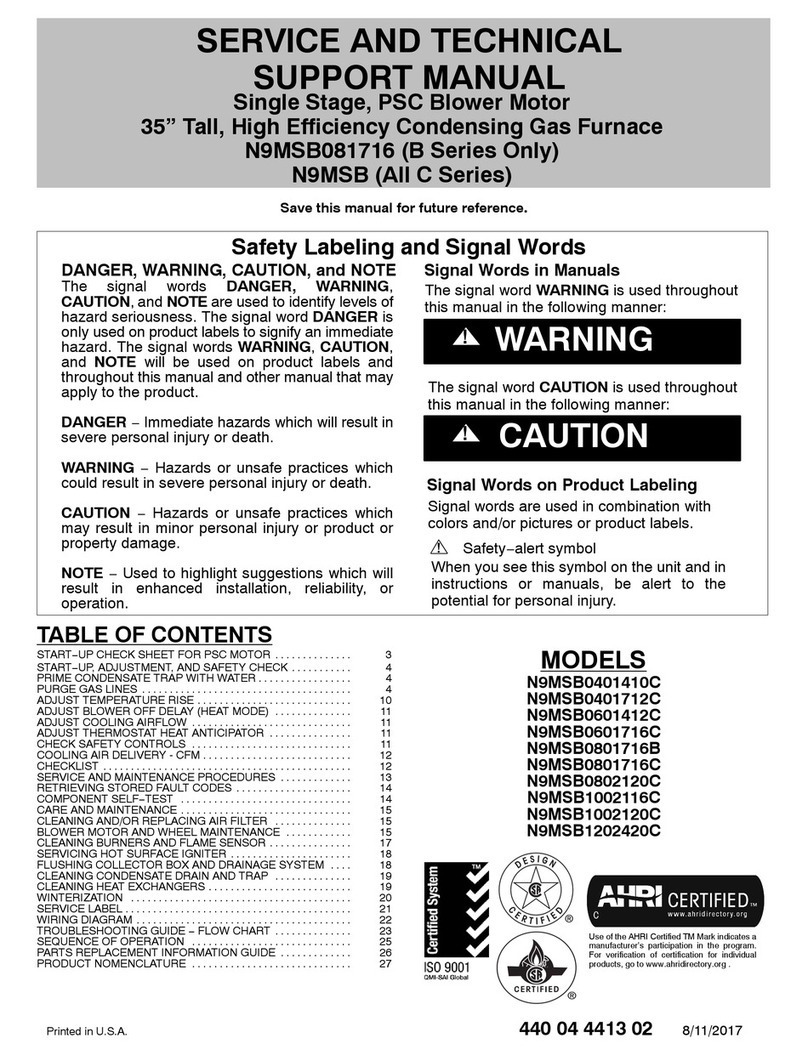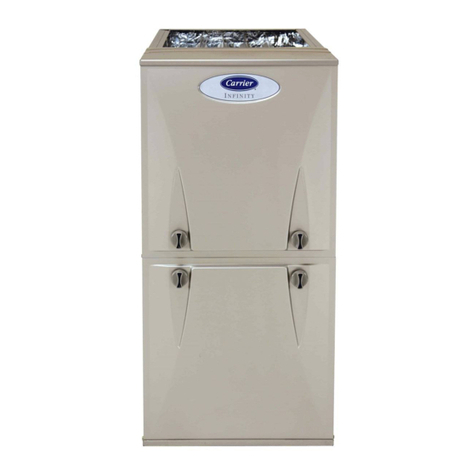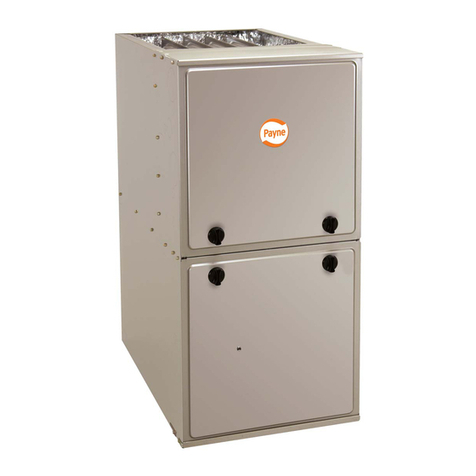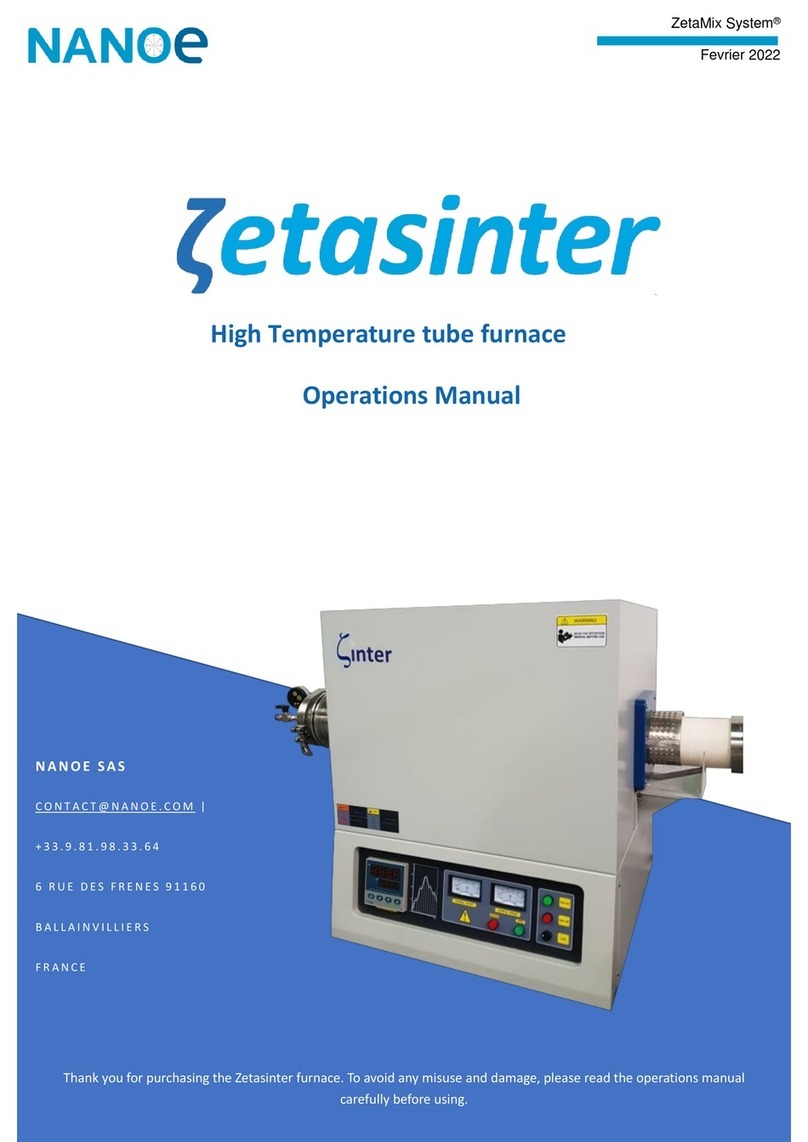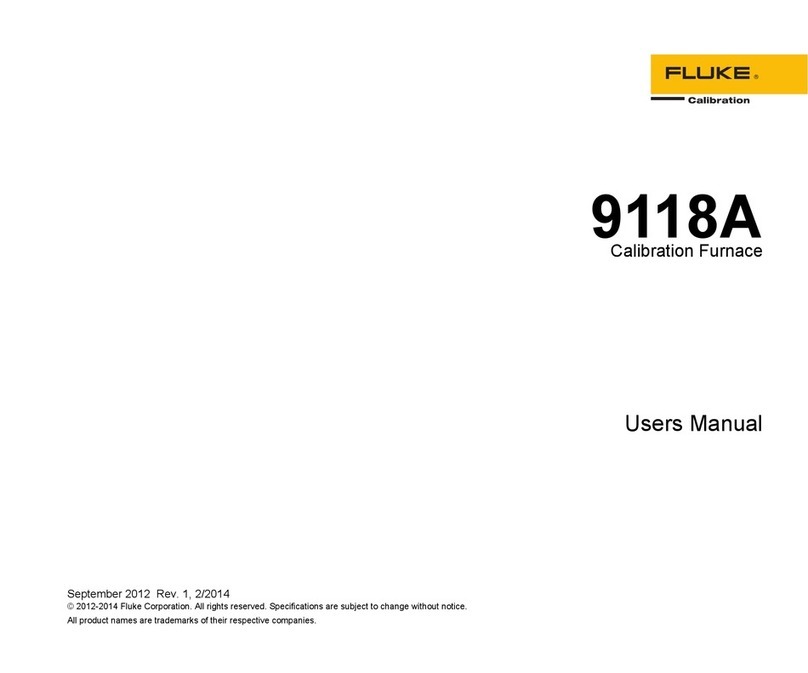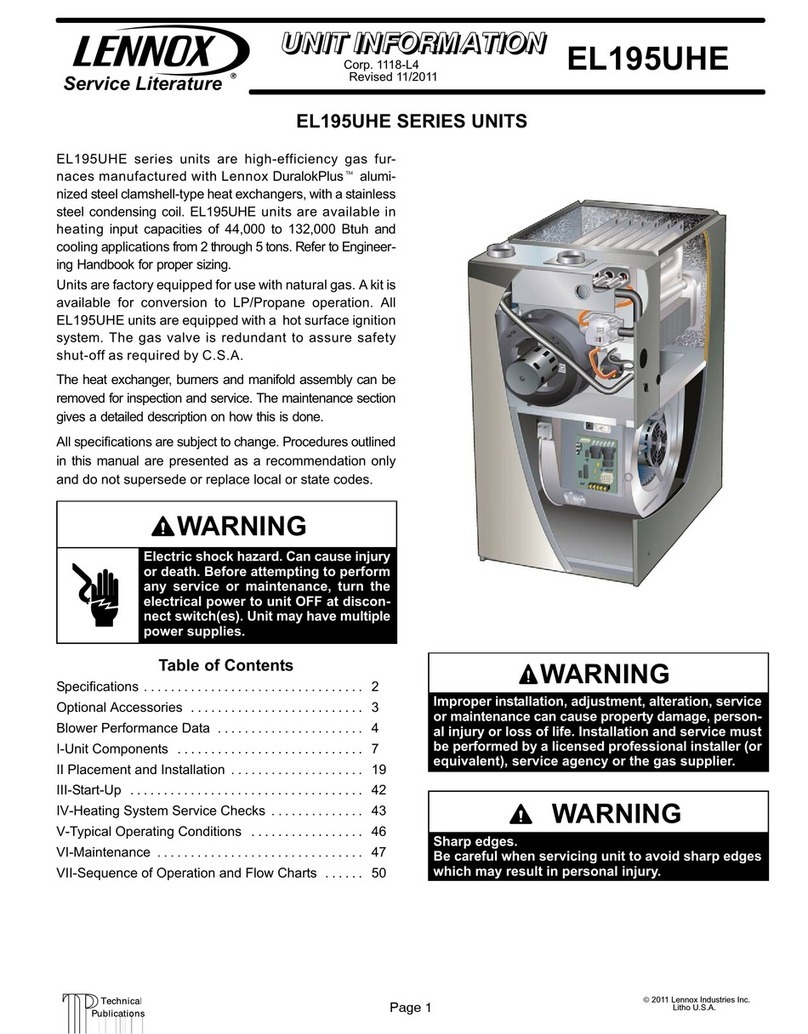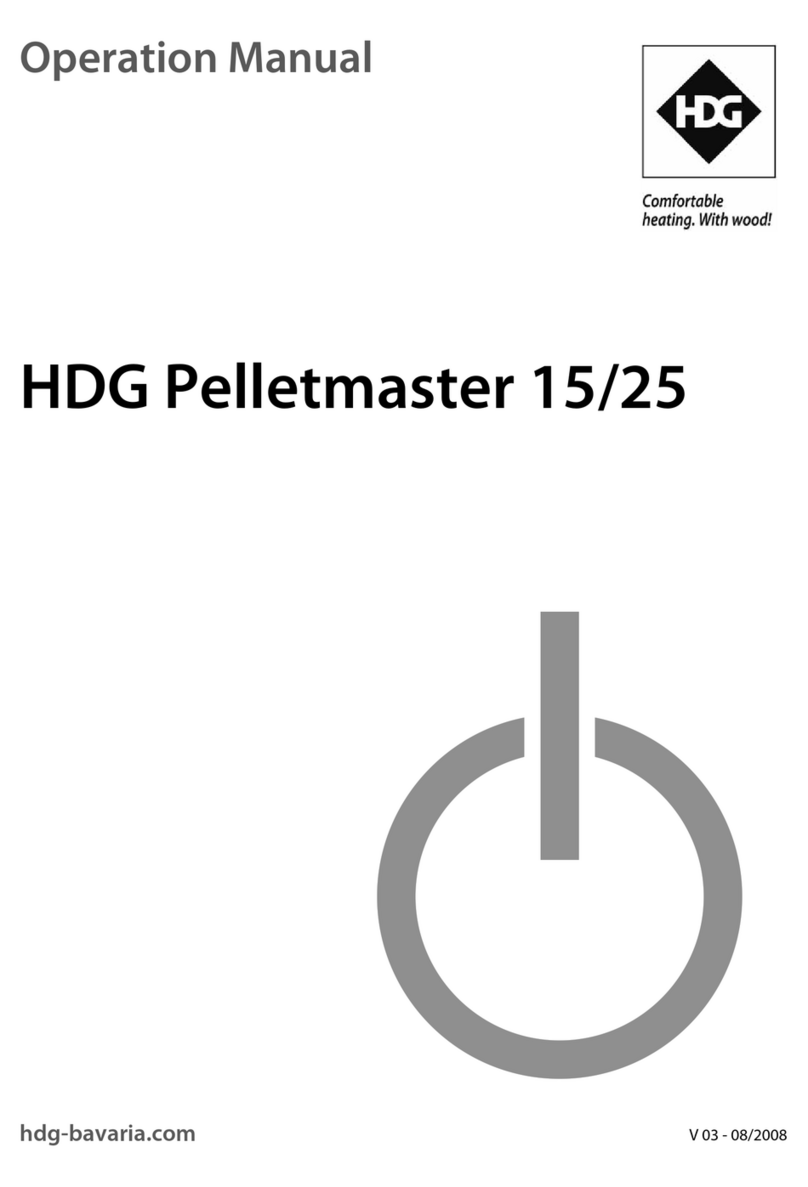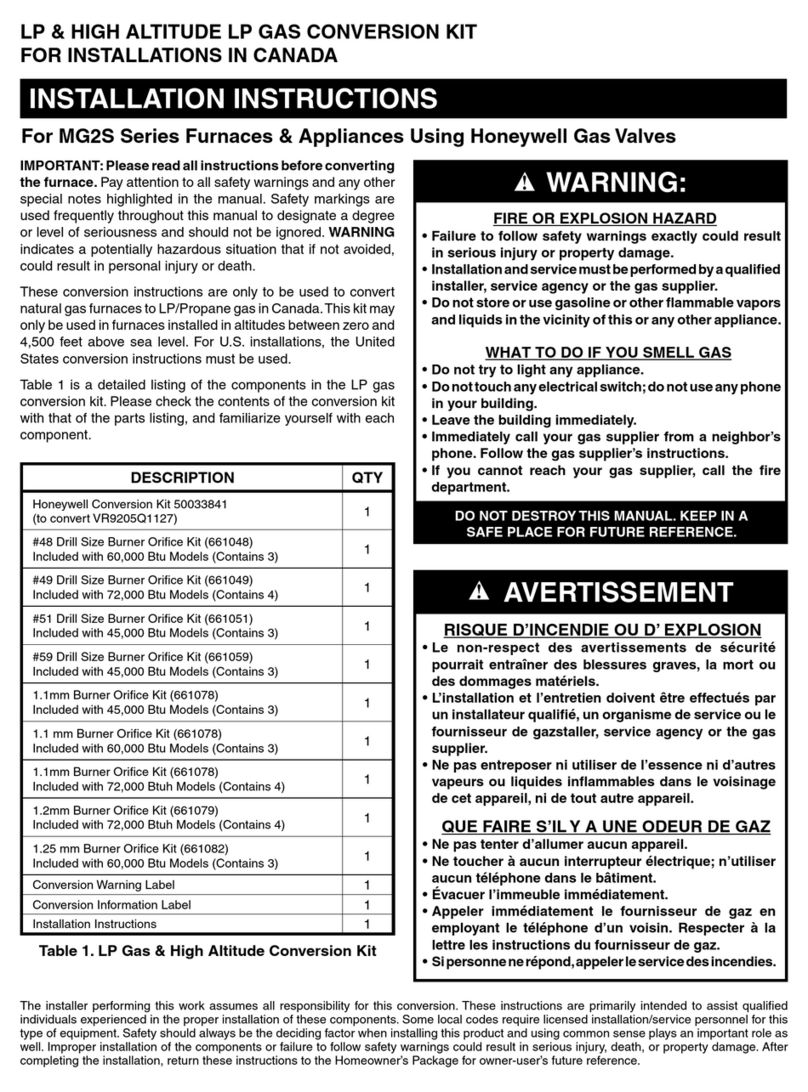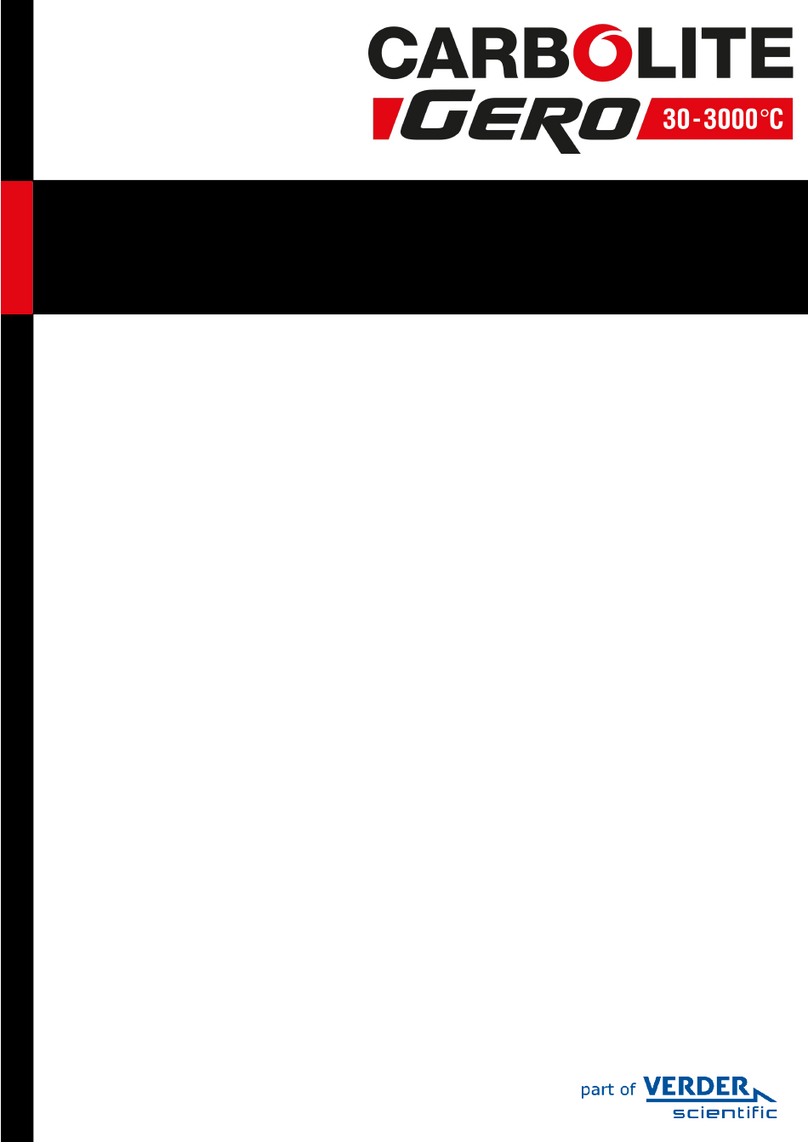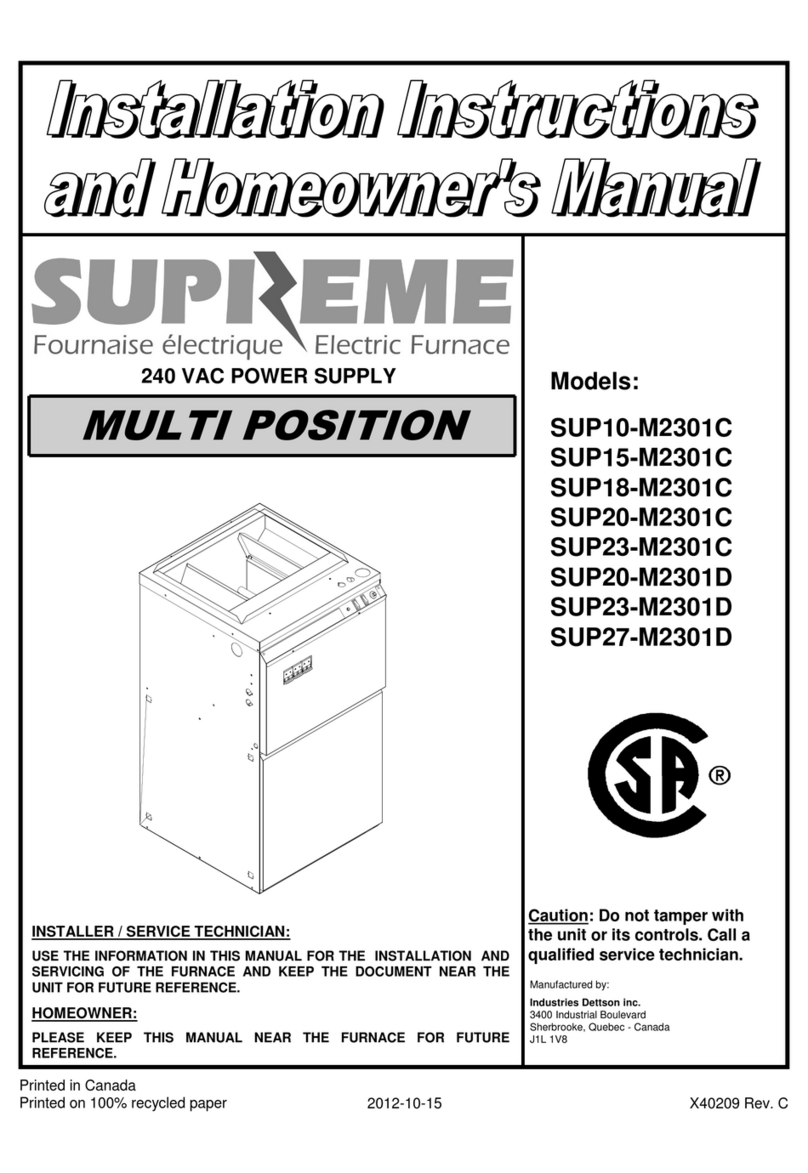
6
MAGNUM 7500 FURNACE TECHNICAL DATA
ESTIMATED FUEL FEED RATE CHART
CORN: Fuel consumption will vary depending on Kernel size and moisture content
Heat Setting Approximate fuel consumption BTU Range
# 1 fuel setting 2.8 pounds per hour 22,000 to 25,000
# 2 fuel setting 4.5 pounds per hour 35,000 to 40,000
# 3 fuel setting 5.0 pounds per hour 40,000 to 45,000
# 4 fuel setting 7.1 pounds per hour 56,000 to 60,000
High 9.0 pounds per hour 70,000 to 76,500
WOOD PELLETS: Fuel consumption will vary depending on fuel size
# 1 fuel setting 2.2 pounds per hour 18,700 to 19,800
# 2 fuel setting 2.8 pounds per hour 24,000 to 25,000
# 3 fuel setting 3.7 pounds per hour 31,000 to 33,000
# 4 fuel setting 5.2 pounds per hour 44,000 to 47,000
High 7.0 pounds per hour 60,000 to 63,000
These fuel consumption feed rates are an approximation. Each unit will vary with the type and size of
the fuel that is being burnt. The most important feed rates to check would be the # 1 setting and the
High setting to make sure that the low and high feeds are proper for the unit. If the feed rates are
drastically different contact the factory for suggestions. Do not get alarmed if the feed rates are not the
same as shown. As long as the low fire will stay lit and the high fire does not overheat the unit and
shut it down the unit is performing as it should. Simply adjust the air control to maintain the fire.
The unit is designed to adapt to different size fuels and consumption circumstances.
If you are experiencing different feed rates than shown or if the heat desired is not on a particular
setting, you will need to set the fuel feed rate on a lower or higher setting to adjust for the heat
requirements of your home. The test weight of Corn varies from year to year and that alone will
change the heat output of the unit. There is a fine tune adjustment that the Reseller can make to the
circuit board if the low fire will not stay lit or is burning too hot. You will need to contact your local
Reseller for this adjustment.
It is recommended that when the unit is first installed in the customer’s home that the unit be fired and
run for over an hour to see if the air adjustment is right for the fuel. Making the proper air adjustment
and making sure that proper outside air has been provided will allow the unit to perform properly.
The Magnum 7500 is certified to burn shelled corn and wood pellets. The Magnum 7500 will burn
other fuels such as Cherry Pits, Barley, Oats, Wheat and other identified fuels but the feed rates and
safe operation are not warranted. Check with your local Reseller before burning fuels not approved.
NOTE: The factory will not pay warranty service calls on problems that have come up on the
unit when the proper fuel, combustion air requirements and air adjustments have not been
checked, the unit installed by a licensed/trained installer or the unit operated properly.
tdocbeff
